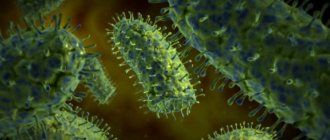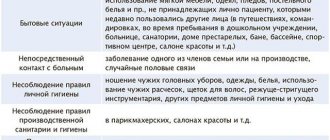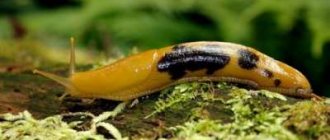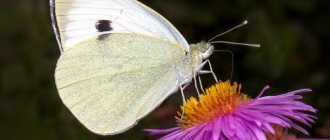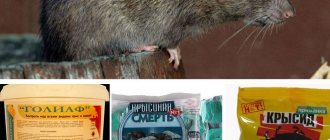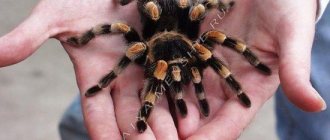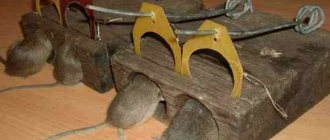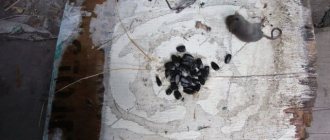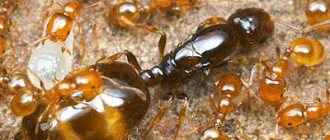What affects the reproduction of mice?
Both in the wild and in the home, several factors influence how mice reproduce. Among them:
- living conditions (temperature, humidity, presence of a permanent nest);
- access to food and adequate nutrition (a hungry female will find it difficult to bear and give birth to healthy offspring);
- health of the female and male.
- Om-Nom-nom
In addition, the weight of the parents also matters. In an emaciated mouse, the pregnancy will most likely end in premature birth or the birth of sick or dead mice. But an obese mouse can also have serious problems conceiving and bearing offspring.
Puberty
Puberty in mice occurs quite early. The female's first estrus can begin as early as 5 weeks of age. A female can reproduce fully only after 2-3 months; before this time, the body is still developing and is not ready for the stresses that arise during pregnancy. Therefore, difficulties may arise both with bearing offspring and during childbirth.
The male is ready to mate after his testes descend into the scrotum. This usually occurs between 5 and 7 weeks of age. Under normal conditions and in the presence of sufficient food, the male retains the ability to reproduce almost until the end of his life.
Offspring
The health of the offspring depends on the quality of the female’s nutrition during pregnancy and the interval between matings. At birth, babies do not see or hear anything, they have no fur, but they have a good appetite. Each weighs no more than 1.5 g.
After a week, you can see grown hair on the animals’ bodies, and the first incisors of the lower jaw appear in the mouth. By 14 days of age, a baby mouse can already see and hear.
Females have noticeable nipples from childhood. In males, the testicles move from the abdominal cavity to the scrotum only in the second week. It is after this that the gender of the offspring can be understood.
A wild litter is not the same as that of a domestic mouse. It develops faster. If indoor rodents are picked up prematurely, the mother may abandon them.
Therefore, offspring can be accustomed to human attention after three weeks, when rodents leave the nest in search of new horizons.
Month-old indoor animals can be given to other people for new families. At this age, they are unlikely to eat their mother's milk. And they switch to adult food and become completely independent.
Video
The mouse has given birth! What to do ?
Sexual cycle
The sexual cycle in mice lasts on average 5–7 days. This period includes 4 phases:
- precursor (proestrus) - this stage lasts approximately 48–60 hours, during which division of vaginal epithelial cells and keratinization of the upper layer occurs;
- estrus (estrus) – the period lasts 12–18 hours, at this time the upper layer of the epithelium is already keratinized, the female is completely ready for fertilization;
- post-estrus (metaestrus) – the duration of this phase is 24–30 hours;
- Interestrus (diestrus) – lasts about 5 days.
After mating, the female develops an inguinal plug - an additional layer of tissue that protects the mouse from re-fertilization by another male.
There is no estrus during lactation. It resumes 25–30 days after birth, 2–3 days after the female stops feeding the pups.
Attention! When a mouse is ready to breed, it becomes restless and may even show aggression. She takes a characteristic pose, slightly arching her back and raising her butt.
How do they reproduce?
Breeding mice in captivity and breeding rodents in the wild have many similarities and differences. Due to their low life expectancy, it is physiologically designed in such a way that puberty in furry cats occurs quickly.
The period of their development from birth to maturity is 1-1.5 months. After this period, the female is already able to become pregnant.
But at this stage there is no guarantee that the offspring will be healthy and the offspring of the mouse may turn out to be frail and sick and will not live long.
Therefore, breeders are recommended to mate rodents no earlier than 2-3 months after birth; it is better if the mother is already 6 months old. The reproduction of mice in the wild is difficult to control, so early fertilization is possible.
So how long does the entire sexual cycle last in mice? Only 2-9 days. Then comes the heat, lasting 12 hours. It is during this period that the female’s behavior changes greatly; she arches her back in front of the male, becomes nervous and excitable.
Males, in turn, send ultrasonic impulses that can attract an individual of the opposite sex.
Sexual activity or estrus resumes immediately after the birth of the offspring. If the female does not feed the babies, she can become pregnant within a couple of days.
When feeding offspring, estrus occurs only 2-4 days after the babies are weaned. In this case, on average, about 3 weeks pass after birth.
Phases of the sexual cycle
The sexual cycle of mice lasts about a week. It is at these intervals that a mouse can be fertilized.
This period can be divided into 4 phases:
- Upon reaching childbearing age, the vaginal epithelium begins to divide.
- After 48-60 hours, the number of cells increases significantly.
- The mouse enters estrus. This usually happens between 22:00 and 1:00 am. The duration of estrus is 12-15 hours.
- After fertilization, an inguinal plug appears. It consists of scales and seeds of the inguinal whip. After a day, the additional layer dissolves. This is exactly as much as is necessary to protect the female from re-fertilization by another male.
Taking into account the length of pregnancy after successful fertilization, you can calculate the period before the appearance of a litter of mice.
Before mating, individuals change their diet to sprouted grains and greens. This allows you to control your weight and prevent you from gaining excess weight, since obesity interferes with conception.
How many mice are in the litter
It is impossible to know in advance how many pups a house mouse will give birth to. This can be either 1 or 15 rodents. Therefore, it is difficult to say how many mice are born at one time. On average this is about 5-9 individuals.
Not all newborn mice are strong and viable. These are the animals that the female can eat.
If the male is not removed in a timely manner, he helps eliminate weak individuals, but then he can also take on healthy offspring, so after mating it is better to put him in a separate cage.
Pregnancy
During the first 7–10 days, it is impossible to determine pregnancy by visually examining the mouse; it looks the same as usual. The most obvious evidence of a female's pregnancy is the cessation of estrus. The behavior of rodents also changes - some females become calmer, while others, on the contrary, show irritability and aggressiveness. Gradually, the mouse’s appetite increases, it becomes less active, and begins to move more smoothly and carefully.
By the middle of the term, the mouse becomes rounder, its belly becomes larger, its nipples swell and become bright pink. The female begins to actively organize the nest - dragging sticks, hay, fluff, scraps of paper, small garbage.
Family
A fairly common problem in pregnant mice is toxicosis. It is manifested by loss of appetite, lethargy, increased salivation, and sometimes convulsions. The cause of this condition can be stress, poor nutrition, lack of fluids, and poor living conditions.
Pregnancy in wild and domestic mice proceeds almost identically. But most often, mice born at home are larger than their wild counterparts. This is due to the fact that pregnant mice in the wild eat worse and are also exposed to various stresses, while decorative mice spend their entire pregnancy in comfortable conditions, receiving a sufficient amount of nutritious, balanced food.
Childbirth
Most often, mice give birth at night. Mice are born between midnight and 4 am. In rare cases, childbirth occurs in the evening between 16:00 and 20:00. Shortly before the start of labor, the female climbs into a pre-arranged nest. She does not need help, all actions are performed instinctively. The mouse takes the most comfortable position - most often it lies on its side, but it can also sit on the sacrum.
When labor begins and the first mouse appears, the female grabs it with her teeth and pulls it out. Then she gnaws through the membrane of the amniotic sac and gnaws the umbilical cord. After all the mice have appeared, the mouse carefully licks them and then eats the afterbirth.
Typically, if everything goes well, tiny mice are born every 5 minutes. If the delay is more than 15 minutes, then most likely the mouse is stuck, for example, due to its too large size. At home, a person helps a rodent in this situation; in nature, a mouse can die.
Kids
All mice give birth to one mouse at a time, but it is very difficult to say in advance how many there will be. How many pups a mouse gives birth to depends on the species and age of the female, and the number of births. Most often, a litter contains from 5 to 9 babies, but in general their number can vary from 1 to 15.
Newborn mice are naked, blind and deaf, their weight is about 1.5 g, and their size does not exceed 2 cm. Their skin is so thin that their insides can be seen through it.
Breeding mice
Like all rodents, mice are very fertile. So don't be surprised if your pets start breeding all year round. Given favorable living conditions and stable nutrition, this is not surprising. They can reproduce offspring as early as one month of age. In her house, the female builds a small nest in which the babies are born. The needle mouse traditionally uses hay, paper, twigs and various rags as materials for this shelter. Reproduction occurs especially actively in the first year and a half of adult life.
Mice are born at night, and one litter can contain from 5 to 10 pups. They are born naked, weighing no more than two grams and a body length of a maximum of 3 centimeters. So it is almost impossible to immediately find out the sex of a newborn. Later, males grow much larger.
During the feeding period, be sure to include milk in your pet's diet. The cubs grow quickly, after 5 days they weigh twice as much as at birth. After two weeks they begin to see, after three they are able to feed on their own. Maternal instincts in needle mice manifest themselves very clearly; they protect their cubs and carefully look after them. Remember, newborn mice cannot be picked up. The foreign smell can scare them away from their mother, and she will stop feeding them. In this case, the cubs will simply die of hunger.
How often do mice breed?
Living in comfortable conditions and eating normally, mice can give birth 12–14 times during the year. In mice living in the wild, mating occurs uncontrollably, but cold weather makes its own adjustments and reproduction is temporarily suspended.
In the case of decorative mice, the process of reproduction and the number of matings is regulated by the owner of the rodents. To avoid health problems, females are mated no more than 3-4 times a year.
But mice that illegally live in a house or a warm basement mate constantly, and newborn mice appear all year round.
On a note! In a year, a female can give birth to from 70 to 150 cubs.
Selection, preparation, rules of use for future parents
Successful reproduction largely depends on the correct selection of a pair. All candidates are carefully assessed, analyzing:
- constitution and physique;
- fatness;
- quality of the fur coat;
- fertility if mice have already been bred.
Both the female and the male must be strong, outwardly healthy, well-fed, but not obese.
If the female has already given birth, then the best is considered the one that:
- was a wonderful mother;
- brought an average number of mice;
- had a high lactation rate.
Animals that have a history of eating their offspring or animals that suffer from excessive aggression should not be allowed into breeding.
The female can be used no more than twice during the year.
Frequent childbirth significantly undermines health, and an unrestored body is unlikely to be able to provide future offspring with everything necessary for full development. Thus, it was noticed that the cubs of females who had exhausted their strength were born weak, developed poorly and died prematurely.
Males are also used wisely: frequent mating depletes reproductive function and the mouse may simply remain unfertilized.
Before mating, animals are provided with complete feeding with a sufficient amount of vitamins (especially E) and microelements.
Obese rodents, which most often turn out to be temporarily infertile, are forced to move as much as possible, and foods rich in carbohydrates are excluded from their diet.
There should be no more than ten females per male. They can be kept all together, but it is better to place each animal in its own cage, placing the females with the male as needed at the time of estrus.
Development of little mice
Despite the fact that newborn mice are very tiny and can navigate only by smell, they have an excellent appetite. They immediately find the mother's nipple and begin to eat. Baby mice grow very quickly. Moreover, usually, regardless of the number of pups in the litter, they develop at the same pace, since weak individuals that have no chance of survival are eaten by the mother soon after birth. Approximate development schedule for newborn mice:
- on the 3-4th day the first fluff appears on the body;
- on days 4-5, the ears open and rise;
- on days 6-7, almost the entire body is covered with fur and the first teeth begin to cut;
- On days 12-13, the eyes open.
In the third week of life, the mice finally develop all motor functions, they can run and eat solid food. After only 3-4 weeks, the pups become independent and can do without their mother.
Description of the external appearance of the spiny mouse - akomis
At first glance, it may seem that the spiny mouse is a rather large animal, but if you look closely, you will notice that its body does not exceed 11–13 cm in length, and its tail appendage, which grows to about the same size as the whole body.
On the face of this mammal one can see beautiful, very large eyes, black in color, and large ears, which are placed vertically and have a regular, slightly rounded shape. The ears have the ability to move. The muzzle itself is quite narrow, probably for this reason this rodent was called the spiny mouse. Near the oral cavity you can see long vibrissae; these elements greatly help the animals navigate in their natural habitat. The entire surface of the mouse’s body is covered with thick and fluffy fur, soft in texture; in addition, this representative of mice has one more feature - in addition to the fur, on the dorsal side of its body there are also small needles, which are slightly softer and shorter than those of a hedgehog . The tail process is devoid of any vegetation, it is bald and covered with so-called scales. This is a very vulnerable part of the body that breaks often. Nature has painted this rodent in a variety of shades; the color scheme on the animal’s body varies from light yellow to smoky gray. Whatever the color of this animal, with age the color gradually darkens and becomes more pronounced and saturated. In addition, an adult male can be easily distinguished from a young animal by the presence of a thick layer of fur around the neck, which resembles a lion’s mane. The limbs of the akomis are very small and short, ending in small claws. These amazing animals have one special feature - the ability to regenerate; like lizards, they can shed their tail and even some areas of their skin in case of danger; no scars or wounds remain in this place, and after some time the skin is completely restored.
